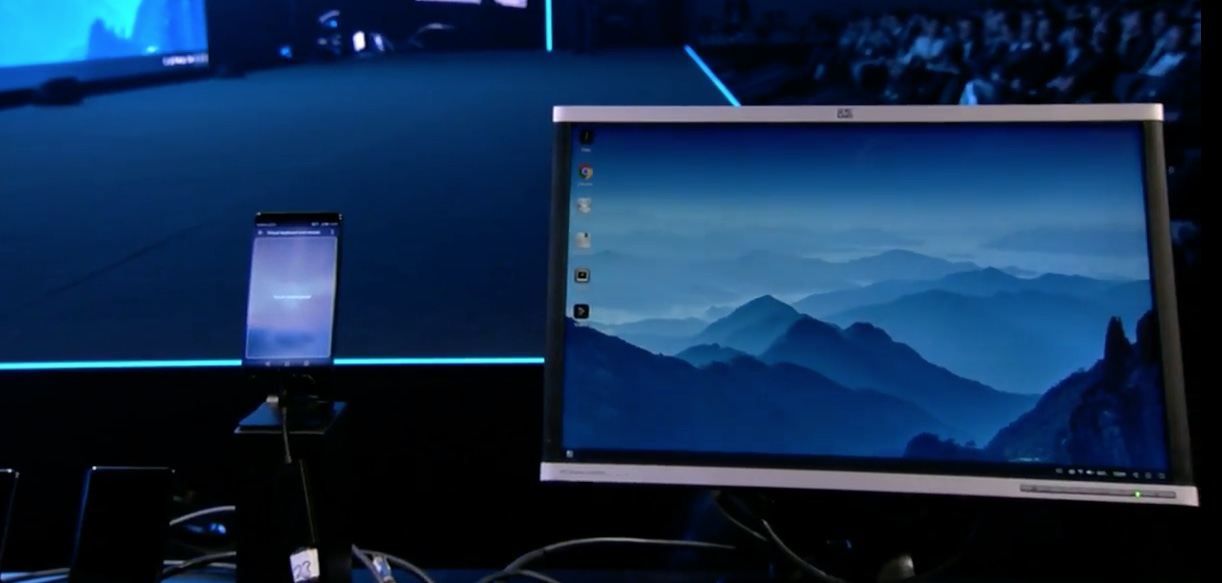
You can see the Huawei implementation in video form on YouTube here (cued up to the right point and screen-captured above). Like the Samsung DeX system, it's a big of a kludge, running Android applications and not actual 'PC' apps, though of course the usual Microsoft Office titles are there in Android form too, so it makes little difference from a practical point of view for end users, I suspect. Still, it's not as elegant as the Continuum system, where the applications used are often identical to the UWP apps used on a real Intel or AMD-based PC.
You may remember that I played extensively with what I called 'Continuum lite' here, i.e. connecting to a monitor directly and not using a USB dock.

Old hands around here will have spotted that everything Huawei and Samsung have been showing off in 2017 was being done already on the Lumia 950 devices back in 2015. What's partly making the difference in terms of performance, of course, is that processors have got a lot faster since then. Using an Elite x3 or Alcatel IDOL 4 Pro with Continuum is definitely faster than on a Lumia 950, and using one of today's Snapdragon 835 or Kirin 970 or Exynos 8895 chipsets, especially with more RAM, makes a big difference again. Oh, for some cutting edge hardware running Windows 10 Mobile and Continuum.
What might have been, eh?
I wonder how many tech reviewers of the Huawei Mate 10 range will spot that the Desktop system is doing what Microsoft did two years previously?
